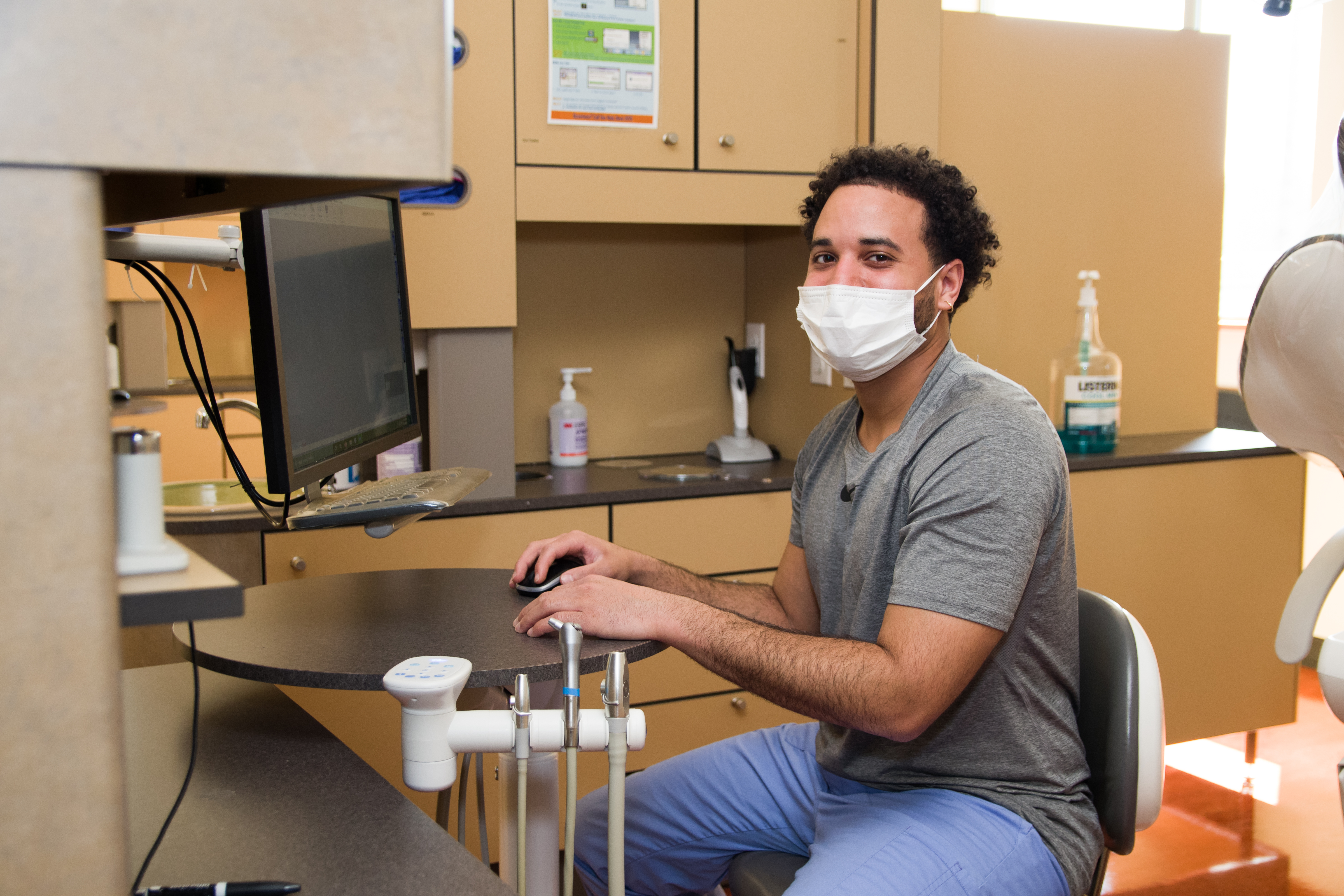
Before COVID-19, says Michelle Glatt, HealthPoint’s vice president of population health, the organization had been researching how to offer patients a way to stay home and see their health care providers using technology, a method called telehealth.
Meeting with providers without leaving home had the potential to better serve patients when transportation was a barrier to visiting a clinic. It could be more convenient for those with children at home, or jobs that didn’t allow time off for a health care appointment. And it was something an increasingly tech-savvy patient population was beginning to find not just acceptable, but preferable.
Then the pandemic struck, and everything sped up.
“What happened with COVID-19 is we had to move very quickly to protect our communities,” Michelle explains. It came down to keeping patients where they were likely safest from coronavirus: at home. For those with no COVID-19 symptoms, the immediate challenge was meeting their needs without exposing them to the risks of traveling to an appointment. For those with symptoms, it was taking care of them while they remained at home, striving to give them the best chance at staying out of the region’s hospitals.
Rapid pivot from in-person to on-phone
About a week after the first death attributed to COVID-19 in Washington state, HealthPoint’s providers pivoted toward caring for many of their patients over the telephone. Michelle estimates that more than two months later, about 80 percent of visits are conducted over the phone.
Dr. Carolyn Halley, HealthPoint’s medical director, recently took a call with a patient who requested a referral for a home health care social worker. It’s the kind of need that adapts well to the telephone, she says. But like most of the providers she talks with these days, she says she “toggles back and forth” between phone visits that are unsatisfying and OK. Video, she says, will likely be an improvement.
“Sometimes I feel like we’re trying to make the best of it,” she says of the telephone appointments. “But we’re also so new at it. We’re learning. I think we will be doing more telehealth visits using audio and video, and I do think that’s a good thing.”
A future on screen
While providers adjusted to on-phone instead of in-person, Michelle and her team scrambled to start a pilot program using audio and video in two locations: Midway and Redmond.
It helped that in early March, government policymakers expanded coverage of virtual health care, both by telephone and video. “But,” says Michelle, “we would have done it anyway because it was the right thing to do for our community.”
Most HealthPoint medical teams providing video visits conduct their appointments in exam rooms. The visits tend to follow the same pattern as in-person appointments, says Michelle. For example, medical teams work with patients to get as many vitals as they can. Patients with scales weigh themselves. Those with blood pressure cuffs or oximeters report readings.
One of the challenges for the future is getting medical equipment to patients for home use. Another is setting up systems so providers can use telehealth in their homes. And then there’s solving how to roll out the system to more HealthPoint staff.
“We’re thinking about how to be most effective with telehealth,” Michelle says, “because I think we might need to be doing this for a long time to come.”
